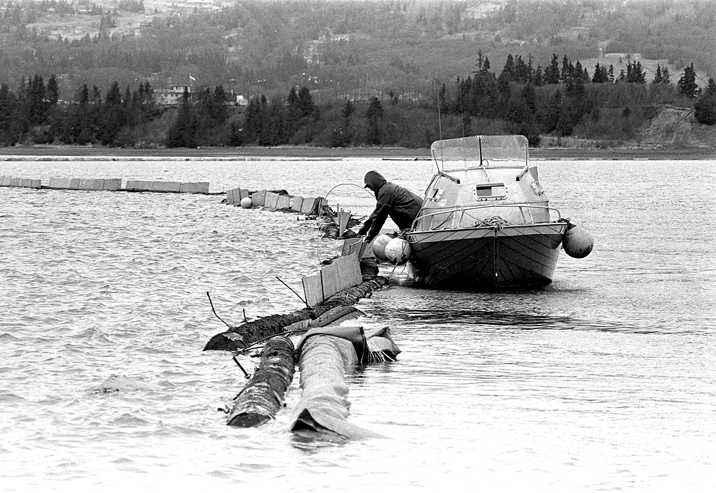On March 24, 1989, the Exxon Valdez hit Bligh Reef in Prince William Sound — “fetched up,” in the words of its captain, Joe Hazelwood.
After 8,700 oil tanker transits through the sound since the first tanker loaded in 1977, Alaskans had become complacent — some of them. Just the day before, oil spill activist
Riki Ott had told the Cordova City Council, “It’s not a matter of if an accident will occur, but when.” Alyeska Pipeline Terminal had spill response equipment in Valdez, but it was buried under 10 feet of snow.
The 987-foot Exxon Valdez hauled 53 million gallons of oil. At about 11:40 p.m. March 23, Hazelwood encountered icebergs in the shipping lanes and steered east. At midnight, Hazelwood transferred control to third mate Gregory Cousins and went below, with helmsman Harry Claar steering. A few minutes later, helmsman Robert Kagan took over control.
At 12:04 a.m., lookout Maureen Jones reported seeing the Bligh Reef light on the wrong side of the ship. Cousins and Claar tried
to turn away from Bligh Reef, but couldn’t steer fast enough,
and the ship ran aground.
Thus started the greatest technological disaster in Alaska’s history, with an official estimate of 11 million gallons of oil spilled. Some say much more was spilled, as Findlay Abbot notes. The sound had three days of clear weather, but the response was chaotic and confused. Heroic efforts by Bill Deppe, who took over command of the Exxon Valdez, kept the ship from capsizing on the reef and got some oil lightered off. Four days after the spill, oil came out of Prince William Sound. Seven days later it was 90 miles out. Eleven days later, oil came into lower Cook Inlet and Kachemak Bay. In this week’s Homer News, we look at how the spill affected people who lived here, how oil spill response has improved and how the Homer News covered the event 25 years ago.


